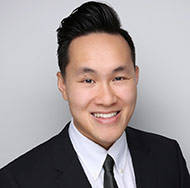Hepatocellular Carcinoma Screening in Asian-Americans With Chronic Hepatitis B
 During my very first rotation of my third year of medical school, I received an unexpected call from my sister that would change my life forever. My sister had always been my beacon of light. She radiates strength, poise and courage in every aspect of her life. But on that day, her voice trembled with an unfamiliar weight. I sensed the depth of her pain as she confided in me about her Hepatocellular Carcinoma (HCC) diagnosis.
During my very first rotation of my third year of medical school, I received an unexpected call from my sister that would change my life forever. My sister had always been my beacon of light. She radiates strength, poise and courage in every aspect of her life. But on that day, her voice trembled with an unfamiliar weight. I sensed the depth of her pain as she confided in me about her Hepatocellular Carcinoma (HCC) diagnosis.
Chronic hepatitis B (CHB), which is a significant risk factor for HCC, affects nearly 1.25 million Americans but is especially prevalent in Asian Americans. While Asian Americans make up only 6% of the U.S. population, they account for nearly 60% of the 862,000 Americans living with chronic hepatitis B, 70% of which were born outside of the United States.1 After tobacco, CHB is the second-most common cause of cancer worldwide.2 However, Asian Americans have the lowest cancer screening rates and are the least represented ethnic group in cancer control research and targeted intervention programs.3 Combined with an ever growing Asian American population, it is more important than ever to spread awareness about screening within our community.
To address this complex issue, a comprehensive approach must be developed which includes early childhood vaccination. Prevention of Hepatitis B through vaccination is the most proactive and effective way of preventing CHB, and therefore the development of HCC. However, foreign-born Chinese and Asian immigrants continue to have significantly lower vaccination rates than U.S.-born Asians.4 Therefore, additional methods, beyond vaccination alone, are critical for reducing the burden of disease. Asian American communities require increased Hepatitis B virus (HBV) screening rates via outreach programs and targeted screening methods using the Electronic Medical Record (EMR).
Early detection of liver changes among individuals with CHB is vital. Therefore, the field of radiology and image-based screening play a critical role. Despite this, there is currently no national screening guideline in place. The American Association for the Study of Liver Diseases (AASLD) recommends surveilling for HCC via biannual ultrasounds in cirrhotic patients and high-risk populations, including Asian males over 40 and Asian females over 50 without cirrhosis. However, clinical risk factors such as age, race and sex have shown to be poorly predictive of HCC.5 Hence, we must increase funding for research, especially in the Asian American population, to establish national evidence-based screening guidelines.
In addition, the appropriate screening modality for HCC is still under debate. While ultrasound is the preferred screening modality, its sensitivity ranges from 58 to 89%, which varies based on user and patient-specific factors.6 Recent studies have shown that abbreviated MRI is more sensitive and specific than ultrasound for HCC screening in patients with cirrhosis.7 However, MRI remains expensive and inaccessible for many. Nevertheless, I am hopeful that future advancements in MRI technology and research will lead to more affordable and accessible screening options for high-risk individuals.
As my sister underwent treatment, including a liver transplant, I watched in awe as she remained resilient and determined in the face of adversity. Her journey has inspired me to become a champion for change within the radiology community, to push for better care and to spread awareness about the critical need for HCC screening guidelines and prevention among Asian Americans. Together, we can advocate for earlier detection, improved care and, ultimately, more favorable outcomes for our patients.
References
- CDC. People Born Outside of the United States and Viral Hepatitis. Published September 24, 2020. Accessed April 17, 2023. https://www.cdc.gov/hepatitis/populations/Born-Outside-United-States.htm
- Kuper, H., Adami, H.O., Trichopoulos, D. Infections as a major preventable cause of human cancer. J Intern Med. 2000;248(3):171–183. doi:10.1046/J.1365–2796.2000.00742.X
- Lee, R.J., Madan, R.A., Kim, J., Posadas, E.M., Yu, E.Y. Disparities in Cancer Care and the Asian American Population. Oncologist. 2021;26(6):453. doi:10.1002/ONCO.13748
- Wang, Z., Jamal, A., Wang, R., et al. Disparities and Trends in Routine Adult Vaccination Rates Among Disaggregated Asian American Subgroups, National Health Interview Survey 2006–2018. AJPM Focus. 2023;2(1):100044. doi:10.1016/J.FOCUS.2022.100044
- Singal, A.G., Nehra, M., Adams-Huet, B., et al. Detection of hepatocellular carcinoma at advanced stages among patients in the HALT-C trial: where did surveillance fail? Am J Gastroenterol. 2013;108(3):425–432. doi:10.1038/AJG.2012.449
- Chan, K.K., Jae, H. L., Won, J. L. Detection of hepatocellular carcinomas and dysplastic nodules in cirrhotic liver: accuracy of ultrasonography in transplant patients. J Ultrasound Med. 2001;20(2):99–104. doi:10.7863/JUM.2001.20.2.99
- Huang, D.Q., Fowler, K.J., Liau, J., et al. Comparative efficacy of an optimal exam between ultrasound versus abbreviated MRI for HCC screening in NAFLD cirrhosis: A prospective study. Aliment Pharmacol Ther. 2022;55(7):820–827. doi:10.1111/APT.16844
Resources